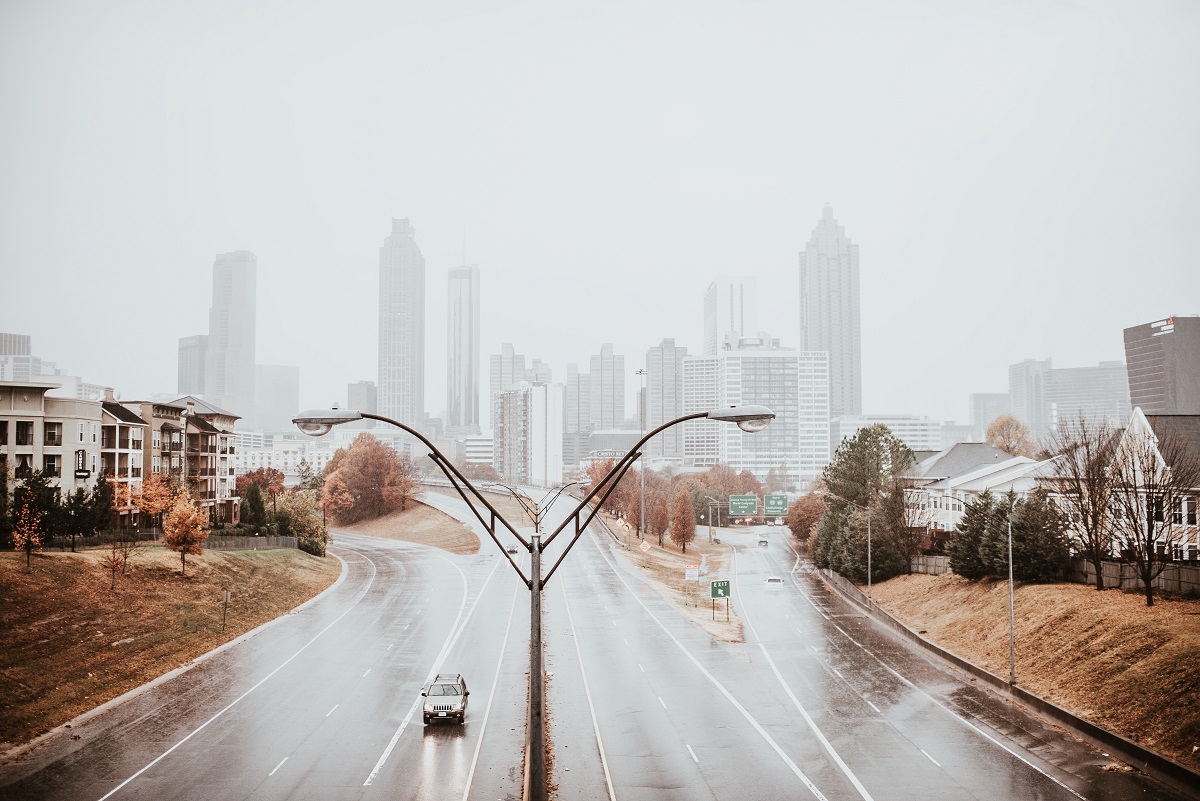
09 Aug Breaking Down the Demographic of Georgia’s Drug Problem
Table of Content
Georgia, Today
In today’s modern society, from climate change to technological dependency, our population is faced with an inordinate number of challenges, yet drug abuse remains at the forefront as one of our most serious and troublesome obstacles. Like a virus, addiction claims individuals of all walks of life across the nation—and Georgia is not immune.
The number of prescription drug addictions and overdoses overdoses are on the rise, and at an alarming rate. In Georgia and across the country, we are witnessing a demographic shift in the population affected by opioid addiction, where educated and affluent neighborhoods are seeing huge spikes in the number of annual opioid-related deaths. It’s not just Georgia’s drug problem, the entire United States is suffering from an opioid crisis.
Commonly Abused Drugs
Like most states in America, the most widely abused drugs within the state of Georgia include alcohol, cocaine, marijuana, with prescription drugs being the biggest threat.
Marijuana
Currently the most used illicit substance in the country, marijuana is used by over 25 million Americans each month, both medicinally and recreationally. Although weed is still considered illegal in the state of Georgia, the use of marijuana statewide is comparable to national averages, where roughly 7 percent of Georgians report smoking at least once within the past year. Of the 663,000 people (ages 13 and up) that reported smoking in the last year, the majority of users were aged 26 or older. There is a growing push towards the legalization of marijuana in response to recent medical advances, as well as the harmful effects produced by synthetic forms of marijuana used as a legal substitute.
Alcohol
Nearly half of those seeking addiction treatment struggle with alcohol, which remains the most abused drug by men and women in Georgia and is responsible for more than 2,000 deaths per year. Roughly 15 percent of Georgian’s report binge drinking on a weekly basis, and in 2016 there were more than 19,000 arrests for DUIs. Alcohol abuse can lead to a slew of problems, including numerous health complications, increased violence and assault, and the eliciting of other black-market drugs, just to name a few.
Cocaine
Cocaine is a powerful stimulant derived from cocoa leaves, and is considered a Schedule II drug, meaning it can be used by a doctor for medicinal purposes but it has a high potential for abuse.
Cocaine continues to aggravate our nation’s drug problem and is the second most commonly used recreational drug in America. The United States continues to supply the demand to the global drug market and serves as the largest consumer of cocaine worldwide. Cocaine use is associated with high levels of abuse, dependency, and both physical and psychological risks.
The freebase form of cocaine, the most addictive form, is known as crack cocaine. Crack remains one of Georgia’s most crucial drug-related threats given its association with violent crime, but statistics show statewide abuse to be comparable to averages nationwide.
Opioids
The term opioid is used to encapsulate the entire family of opiates including natural, synthetic, and semi-synthetic. In short, opioids are painkillers. Morphine is one of the most common and the longest branching opiate medication used in human history. Morphine and other opioids are derived from the sap of the opium poppy and fall into a class of drugs that act on the body’s nervous system to relieve pain. These drugs work by mimicking the body’s natural reaction to pain by stimulating opioid receptors primarily found in the brain, spinal cord, peripheral nervous system, and intestinal tract.
The Opioid Epidemic
While drug addiction can present itself in many different forms, our country is experiencing what is now known as an opioid epidemic. Since 2000, the number of drug overdoses has more than tripled from the opioid epidemic in Georgia, and the majority are related to prescription drugs.
The increased quantity of prescription drugs available has led to a substantial growth of drug abuse, addiction, overdose, and ultimately death. The increase in abuse also results in socioeconomic stressors felt by the state, such as increases crime, poverty, and mortality rates.
How Opioids Affect the Body
By stimulating these receptors, opioids then work by slowing down and blocking the transmission of pain signals to the brain, which leads to a reduced perception of pain. Additionally, the stimulation of opioid receptors produces a pleasurable and often euphoric feeling due to the release of the neurotransmitter dopamine—a fundamental component of the body’s pleasure and reward system.
In the medical world, opioids are most often used and prescribed to relieve severe pain symptoms, much like those associated with cancer, post-surgery, or accident-related injuries; However, they can also be used to treat other various conditions, such as sleep disorders, chronic coughing and diarrhea. In light of their efficacy for treating pain, opioids have an extremely high potential for misuse and can cause a number of undesirable effects. Some of these include physical dependence, depressed respiratory function, euphoria, intestinal complications, and more.
When using opioids for longer periods of time, the body begins to develop an increased tolerance and psychological dependence, meaning that users will need to take much larger doses over time in order to get the same effect. Once this dependency ensues, the habit becomes even harder to kick, and the nasty withdrawal effects felt after decreasing or discontinuing the use of the drug make it nearly impossible to stop. If a user abruptly stops taking these drugs, they will experience negative symptoms such as agitation, anxiety, muscle and bone pain, insomnia, vomiting or diarrhea.
Types of Opioids
Heroin
Heroin is a highly addictive and illegal opioid drug that is made from morphine. It is distributed as either a white or brown powder, or as a black, sticky tar-like substance known as “black tar” heroin. There are no accepted medicinal uses for heroin within the United states, but it continues to be abused and can be lethal in as little as one dose. Most users start by using prescription pills but then transition to heroin as a cheaper alternative.
Oxycontin and Percocet
Both Oxycontin and Percocet opioids fall under a classification of medicine known as oxycodone. The strength and addictiveness of this drug are doubled in comparison to morphine and is considered to be the catalyst to the opioid epidemic we’re seeing in America today. Oxycodone always comes in the form of a pressed pill and is given to alleviate moderate to severe pain symptoms. The drug is also used recreationally where users will crush and snort them like cocaine, mix with alcohol, or administer them intravenously.
Vicodin
If you’ve ever need a mild to severe surgery, it’s very possible that your doctor prescribed Vicodin, medically known as hydrocodone, to aid in the healing process. Vicodin is a combination medicine that contains an opioid pain reliever as well as a non-opioid pain reliever (acetaminophen) used to reduce fever. Long-term use of Vicodin can cause the body to develop a dependency and tolerance to the drug, posing as a risk for vicodin addiction or withdrawal symptoms.
Fentanyl
Fentanyl was developed in the 60’s and used to treat only the most severe pain. Being the deadliest of painkillers, fentanyl is 50 times stronger than heroin and 100 times stronger than morphine.
The integration of fentanyl into America’s drug markets is a reason for the rapidly increased rates of drug-related deaths across the country. Since fentanyl has the same effect as heroin and is simpler to produce, it’s often cut into other batches of dope to boost the amount of product sold, leaving unsuspecting users at risk for overdose. More often than not, those that die of these overdoses are victims that unknowingly took the drug.
These types of opioids are responsible for generating the worst drug addiction crisis our nation has ever seen. To better put our country’s opioid epidemic into perspective, consider this: The United States population makes up about five percent of the World’s total population, yet we account for 90 percent of global opioid usage.
As one might guess, the nature of opioid addiction typically leads to overdose, allowing for it to become the number one killer of Americans under the age of 30– surpassing the number of people killed in motor vehicle accidents each year.
The Role of Big Pharma in the Opioid Epidemic
Ironically enough, most stories of opioid addiction begin at the doctor’s office. In fact, around 75 percent of heroin users start with prescription opioids, such as Vicodin and Percocet. Without the help of major pharmaceutical companies, also known as “Big Pharma”, the crisis we find ourselves in today may not even exist.
During the late 1990’s, big pharmaceutical companies worked hard to reassure those in the medical community that their patients would not become addicted to opioids. With this reassurance, health care providers began to prescribe these pain relievers at greater rates.
The increased availability of prescription pills generated the opportunity for the misuse and abuse of these medications, long before it was made clear that the drugs could be highly addictive.
Since the early 2000’s, the number of painkillers prescribed has quadrupled, along with the respective rates of overdose. While so many Americans lose their lives, major pharmaceutical companies real in their monetary gains.
Big Pharma companies have utilized aggressive marketing tactics and successfully painted opioids as the necessary go-to-pain treatment medication, leading to increased prescriptions by doctors. The overprescribing of these medications has resulted in an excess amount of available, often times leftover or unused, painkillers that can then be illegally shared. In cases of heroin abuse, roughly 90 percent of drug users begin with the use of prescription pills.
Some of the leading pharmaceutical companies that are responsible for today’s epidemic include:
-
- Purdue Pharma
-
- Abott Labs
-
- Johnson & Johnson
-
- Pfizer
-
- Novartis
- Covidien
The Demographics of Georgia’s Drug Problem
Georgia is now among the top 11 states with the most prescription opioid overdose deaths. In the past decade, overdose hospital admissions in Georgia have seen a 1,000 percent rate rise. Now that fentanyl has infiltrated the drug market, overdose rates are skyrocketing at a faster rate.
Given that many people start legally receiving these addictive drugs from doctors, there has been a complete shift in the demographic of drug users—a resurgence of opioids in rural areas where people of all backgrounds and classes are susceptible to addiction.
The Atlanta Heroin Triangle
From a historical standpoint, one may assume the Georgia’s impoverished areas are more prone to the drug abuse, given that higher concentrations of drug addicts are typically found in low-income suburban areas. Yet, areas that are seeing alarming spikes of opioid-related deaths include a variety of ethnicities and socioeconomic backgrounds. In fact, some of these neighborhoods are located in Atlanta’s affluent northern suburbs; most notably, an area known as The Heroin Triangle in Georgia.
The Triangle is an area near Atlanta that is plagued by opioid addiction and is comprised of three central counties: Cobb, Gwinnet, Fulton, and Dekalb counties. The heroin market is booming here; most addicts that start with prescription pills typically switch to heroin as a cheaper and more accessible substitute, because it often produces the same high.
Legally or illegally, prescription pills are not easy to get, and the cost per pill is not cheap. A bag of heroin can sell as cheap as $10 on the black market, whereas a single pill can cost as much as $30. It’s also important to note that finding a credible dealer is not easy, and users are at risk for purchasing heroin laced with other deadly drugs.
The outbreak of heroin overdoses in The Triangle has claimed mainly young people, men and women, between the ages of 18 and 25. Reporter Jeremy Campbell from 11 Alive discovered that there was a 4,000 percent spike in the number of heroin-related deaths in young people, ages 15 to 35, from 2010 to 2016. Senior citizens, ages 55 and older, are also at risk for opioid addiction, being that ‘elderly pain’ is now treated by these addictive medications.
Youth and Religious Communities
A surprising finding is that, despite the variety of ethnicities affected, Jewish communities centered in these areas seem to be predominantly affected by Georgia’s drug problem. There has been an outbreak of high school Jewish teenagers overdosing on heroin within The Triangle, and the stigma surrounding drug addiction may play a large role as to why.
Small religious communities are bound together by a shared set of values and standards, and the expectations they are supposed to uphold could have dire consequences. Many of the teenagers in these communities are seen as hardworking, they perform well in school and in sports, and they tend to their religious duties as “good kids” should.
The residents describe the teenage students in The Triangle as very competitive, as there is a lot of pressure to earn the grades to qualify for certain scholarships. The shame associated with drug addiction, coupled with stress and pressure to perform, keeps families from addressing their addiction.
Drug addicts are stereotypically viewed as losers or low-life criminals, creating a stigma that prevents the discussion of these important issues. By sweeping these problems under the rug, teenagers and parents remain in denial and refrain from seeking out treatment and support.
The Response
Georgia is not alone in this battle against drug abuse. A public health emergency has been declared as the staggering number of deaths continue to rise, but many believe local and federal governments are not doing enough. Combating the drug problem at hand takes infrastructure, and infrastructure means cost—a cost that’s paid by our tax dollars. Finding the means to support the war on drugs has proven to be incredibly difficult, and current efforts are not making the cut.
Conversation and Education
There appears to be a general lack of understanding for how addiction works, and implementing simple measures such as general education can have a serious impact. For both parents and children, the need for substance abuse education is essential. Understanding the risks and consequences associated with drug abuse and addiction is fundamental in the prevention of drug-related deaths.
A recent campaign to bring this conversation to the forefront was started by several Jewish mothers in the community who lost their children to heroin. These parents have stressed the need for certain dialogues to be held with children at young ages to fight the stigma that surrounds seeking treatment. They emphasize that synagogues and churches exist to protect and help the people, both healthy and sick, and that one should not be ashamed when asking for support.
State Action
The Safety Council identified six ways for states to take action against the epidemic that could have a significant impact:
-
- Mandate prescriber education
-
- Implement opioid prescribing guidelines
-
- Integrate Prescription Drug Monitoring Programs into clinical settings
-
- Improve the collection of data and sharing
-
- Treat opioid overdose
- Increase the availability of opioid addiction treatment
The National Safety Council has ranked the state of Georgia as one of the top 13 states receiving the highest mark for taking comprehensive actions to help protect their residents and eliminate opioid overdoses. Georgia has met five of these six measures, while only two states, Nevada and New Mexico, fulfilled all six.
The Georgia Department of Public Health has also created an electronic database that can help protect patients at risk for drug abuse by informing pharmacists and prescribers about the history of their patient’s controlled substance use.
The U.S. Surgeon General Jerome Adams issued an advisory and encouraged citizens to carry Naloxone, the drug used to reverse overdoses, at all times. In 2016, the governor of Georgia issued an order directing the Department of Public Health to allow pharmacists to dispense naloxone over-the-counter. Despite all of these efforts, the rates of overdose continue to rise, and there is so much more to be done.
Conclusion
The drug problem in America has left countless lives and families in shambles while the big pharmaceutical companies and practices that prescribe these drugs remain unaffected. The demographic of drug addicts has shifted and is no longer limited to the poor and uneducated, but rather covers a wide variety of ethnicities, ages, and socioeconomic statuses.
The state of Georgia remains hopeful that, through the use of increased education and legislative action, our nation can hamper the greed of Big Pharma and further the efforts in stopping the spread of this disease.
If you or a loved one is struggling with addiction, find a Georgia rehab center immediately. Don’t wait for that first hospital visit, because before you know it, it could be too late.
Sources:
Golde, Kal. “Time for Georgia to Admit It Has a Drug Problem.” GPR. 17 Oct. 2016. http://georgiapoliticalreview.com/time-for-georgia-to-admit-it-has-a-drug-problem/
“Georgia Opioid Summary.” NIH. Feb. 2018. 6 Mar. 2019. https://www.drugabuse.gov/drugs-abuse/opioids/opioid-summaries-by-state/georgia-opioid-summary
“Atlanta Metro Sentinel Community Site (SCS) Drug Use Patterns and Trends, 2016.” NDEWS Coordinating Center. Oct. 2016. 6 May 2019. https://ndews.umd.edu/sites/ndews.umd.edu/files/u1424/atlanta_scs_drug_use_patterns_and_trends_2016.pdf






No Comments